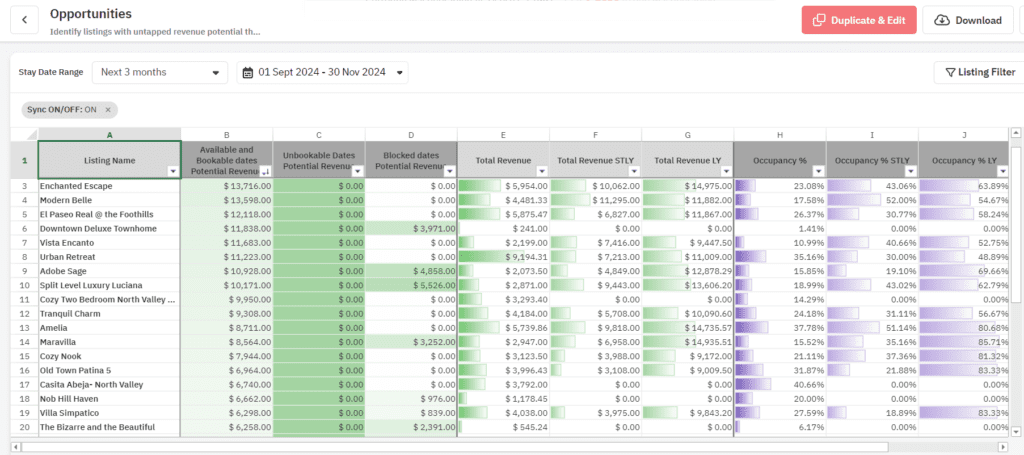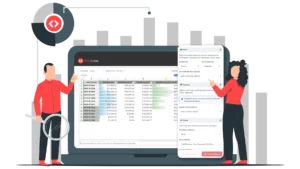Updated: October 9, 2024
As a vacation rental property manager, facing the slow season is inevitable. Occupancy rates for vacation rentals can drop significantly during slow seasons. An 11% increase in supply for vacation rentals from 2022 to 2023, which outpaced the demand for rentals, has also resulted in a decline in key performance indicators. For instance, U.S. vacation rental occupancy in February 2024 was 4% lower than in 2023 and 8% lower than in 2022. This implies that it is even harder to get bookings, especially when the highs of the peak season have slowed down. It can raise concerns among vacation rental owners during slow seasons, and as a property manager, they would look to you for answers.
But here’s the key—having a well-thought-out pricing strategy and maintaining open, data-driven communication can alleviate concerns and set everyone up for success. Starting early, aligning goals, and using market data to guide decisions can help you confidently navigate the quieter months and keep your owners on board. Let’s explore six crucial tips to help you lead these conversations and prepare for the slow season ahead.
1. Start Conversations Early and Set Clear Expectations
Before the slow season begins, reach out to your owners and lay out a plan. Start by acknowledging that slower booking patterns are expected during this period. For instance, bookings begin to taper off around mid-August in many U.S. markets. By getting ahead of the curve, you can avoid last-minute panic and set expectations.
Different owners have varying levels of risk tolerance and goals for their properties. One owner might prioritize increased occupancy, while another is focused on maximizing revenue, even if that means lower occupancy. For example, if an owner wants to prioritize occupancy, you might suggest setting a lower minimum price or discounting rates earlier than usual. Flexibility with minimum stay restrictions can also open up more opportunities, especially if weekends or short stays are prevalent in your market.
Having these conversations upfront helps ensure you’re on the same page, and when bookings slow down, everyone knows the plan.
2. Leverage Market Data to Provide Context
Owners might not fully understand the broader market trends affecting their property, so it’s essential to use data to frame the conversation. For example, if the market is pacing behind last year’s numbers, share that insight with your owners. Showing vacation rental owners how their property performs during slow seasons compared to the market gives them a clearer picture.
Using tools like PriceLabs’ Market Dashboards, you can compare your property’s performance to the overall market and explain how occupancy, booking trends, or increased competition from new listings affect everyone, not just them. For instance, if your property’s bookings are trending behind expectations, but the market data shows that occupancy across your region is similarly low, it helps keep things in perspective. Data-backed insights calm nerves and show you’re actively managing the situation.
3. Discuss Strategic Adjustments to Pricing and Stays with Vacation Rental Owners During Slow Season
Discuss potential pricing and minimum stay restriction strategies once you and the owner are aligned on goals. The slow season may require more aggressive pricing adjustments to remain competitive. This could mean setting a lower minimum price or discounting specific dates earlier, especially during low-demand weeks.
Let’s say you know there’s a lull in bookings, but an event in the city is coming up in a month. You might adjust prices higher for that specific weekend but keep a lower minimum price for the surrounding weekdays. This approach balances maximizing revenue on high-demand dates while attracting bookings during the quieter periods.
Additionally, consider being flexible with stay restrictions. For example, relaxing your minimum stay from three nights to two might entice more last-minute bookings. PriceLabs’ Minimum Stay Profiles allow you to adjust stay restrictions seasonally, helping you meet changing market demands without sacrificing overall strategy.
4. Regularly Communicate Updates and Pricing Adjustments with Vacation Rental Owners During Slow Seasons
Communication shouldn’t end after the initial conversation. Continuous monitoring of market trends and your property’s performance is vital. Slow seasons can still be unpredictable, so stay proactive by regularly reviewing your data.
For instance, if bookings continue to underperform, reassess whether further price adjustments are necessary or if more aggressive discounts should be applied. PriceLabs can automate dynamic pricing adjustments, but the real benefit comes from human oversight. Regular check-ins with your owners, armed with updated data and insights from tools like PriceLabs Report Builder, ensure they stay informed and reassured that everything possible is being done to maximize bookings.


5. Highlight Key Dates and Opportunities
Even in the slow season, high-demand weekends, holidays, or events usually present opportunities to generate more bookings. Identify these dates early and ensure your pricing strategy reflects the expected demand. You can use the PriceLabs Market Dashboard to identify key dates in the calendar to plan your revenue management strategies strategically.
For example, if there’s a regional festival or a long weekend on the calendar, adjust prices and minimum stays accordingly to capitalize on these opportunities. Owners might not always be aware of these key dates, so sharing this information shows you’re thinking strategically.
Additionally, if the market data reveals a spike in interest for certain weekends, relay that to your owners and explain how you’ve adjusted prices or stay requirements to capture more bookings. You can help your vacation owners during slow seasons by proactively identifying these high-demand periods.
6. Stay Transparent and Proactive with Data During the Slow Season
During the slow season, it’s normal for owners to feel uneasy, especially when the bookings aren’t coming in. The key here is transparency. Use data to show that the slowdown isn’t just affecting their property but is a market-wide trend that recurs and resolves naturally. PriceLabs’ Neighborhood Data tool allows you to monitor real-time occupancy rates in the area, which can be incredibly helpful for easing concerns.
For example, if your owner is worried about a low booking rate, you can show them that similar properties in the area are also seeing a dip in occupancy. This kind of proactive communication reassures them that you’re doing everything possible to manage their property during the off-season and that the low occupancy isn’t reflective of a poor strategy but market conditions.
Conclusion
Slow seasons are part of the natural cycle in vacation rental management. However, with open communication, strategic adjustments, and data-driven tools, you can effectively manage your properties and your owners’ expectations. By preparing early, leveraging data, and continuously monitoring market trends, you can reassure vacation rental owners during slow seasons and keep them engaged while setting the stage for success when the high season returns.








